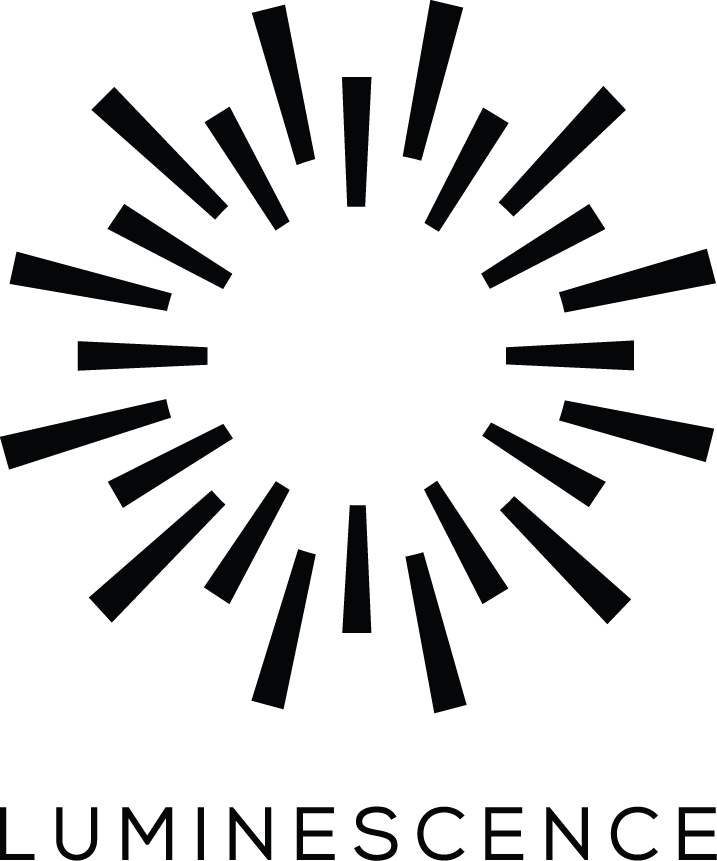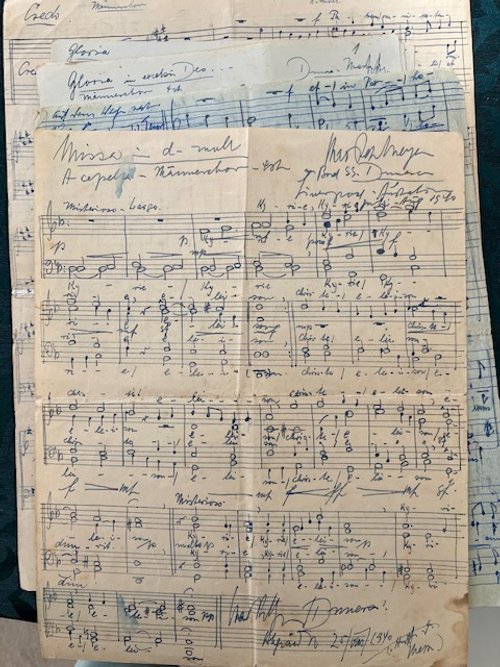What’s On
Past Events

Garden of Earthly Delights
A garden teeming with temptation and desire, grotesque creatures and improbable scenes of surrender: the uninhibited world of Hieronymus Bosch’s 500-year-old triptych “De tuin der lusten”. Baffling his Dutch contemporaries and the casual tourists in Madrid’s Prado in equal measure (not to mention generations of art critics) the Bosch’s Garden of Earthly Delights is ever-enigmatic. Whether it is interpreted as a surreal feast for the senses or as a stark warning about the moral decay during a time of rapid change, this art exudes dread and seduction in equal measure.
Trust Luminescence Chamber Singers to turn this surreal feast of the senses into an aural tapestry as pleasurable and perilous as Bosch’s vision. Drawn from the vaults of Renaissance raunch, Medieval monasterian excess and daring modern transgressions, Garden of Earthly Delights offers a vocal cornucopia of surprise and surreptitiously cheeky delight, probing the pleasures and perils of excess.
Program to include music by Josquin, Banchieri, Gallus and new works by Nicole Murphy and Archie Tulk.
70 minutes no interval, conducted by Roland Peelman AM

Gesualdo Tenebrae
"There is something deeply troubling and inscrutable in Gesualdo’s music, something that any listener will unfailingly experience. This most particularly holds for Tenebrae responsoria (1611), his definitive statement, his monument, his testament. It is as if this work would constantly extend over its boundaries and transgress its time and setting, immediately addressing modernity…”
Mladen Dolar, Out of Joint (2020)
More than 400 years later, the music of Carlo Gesualdo still seems strikingly avant-garde. Composed for his own private use during his final years, and likely unheard during his lifetime, Gesualdo’s Tenebrae Responsories are of unmatched intensity. This is music at the end of an epoch; at once steeped in and a radically unsettling subversion of the traditions of the sixteenth century.
The first set of Responsories for Maundy Thursday (Feria V) evoke Christ’s abandonment, betrayal, and death. Gesualdo’s dramatic settings reflect the angst of the passion story, alongside his own bloody encounter with death – in 1590 he murdered his wife Maria d’Avalos and her lover Fabrizio Carafa, Duke of Andria, when he discovered them “in flagrante delicto’’. Gesualdo’s punishment was as self-inflicted as the crime. His status as prince saved him from criminal persecution; instead he saw out his days living as a recluse, tormented by grief and guilt.
Translating literally to ‘darkness’, the plural form of ‘Tenebrae’ is fitting; it implies a multiplicity, all-encompassing shadows; a plunge into darknesses of both deeply personal grief and of universal sorrow.
Tickets on sale from December 12.
Programme:
Carlo Gesualdo, Responsoria et alia ad Officium Hebdomadae Sanctae spectantia (1611)
Feria quinta (Maundy Thursday)
In monte Oliveti
Tristis est anima mea
Ecce vidimus eum
Amicus meus osculi
Judas mercator pessimus
Unus ex discipulis meis
Eran quasi agnus innocens
Una hora non potuistis
Seniores populi consilium
Miserere mei, Deus
1 hour no interval

The Dunera Mass
In 1940, refugees from Nazi persecution who had fled to Britain were suddenly classified as enemy aliens, transported to Australia on the ship Dunera, and held in camps in Hay and Orange, NSW, and in Tatura, Victoria. In their attempts to re-create traces of their former lives, internees ran a remarkable range of activities inside the camps, from art classes to university-style lectures and theatrical performances. As a result, they produced an extraordinary array of personal art and artefacts, from beautiful portraits and landscapes to pop-up paper models and even an unofficial camp currency. The Library has spent many years compiling collections that piece together this little-known chapter in Australian history and now holds one of largest Dunera collections in the world.
The Dunera Mass is a dramatised concert, telling the story of these refugees using the recently rediscovered music manuscripts of Dunera composer Max-Peter Meyer, with projections of artworks created by fellow Dunera refugees to illuminate the story.
Writer-researcher-narrator: Dr Nicole Forsyth
Performers:
Luminescence Chamber Singers
The Oriana Chorale
Roland Peelman AM
Dr Anna McMichael (violin)
Nicole Forsyth (viola)
Stephanie Li (cello)
Jem Harding (piano)
Sound engineer & producer: Jim Atkins
Presented by the State Library of NSW in association with the exhibition Dunera: Stories of Internment.
This performance is part of a project funded by Creative Australia.

The Dunera Mass
In 1940, refugees from Nazi persecution who had fled to Britain were suddenly classified as enemy aliens, transported to Australia on the ship Dunera, and held in camps in Hay and Orange, NSW, and in Tatura, Victoria. In their attempts to re-create traces of their former lives, internees ran a remarkable range of activities inside the camps, from art classes to university-style lectures and theatrical performances. As a result, they produced an extraordinary array of personal art and artefacts, from beautiful portraits and landscapes to pop-up paper models and even an unofficial camp currency. The Library has spent many years compiling collections that piece together this little-known chapter in Australian history and now holds one of largest Dunera collections in the world.
The Dunera Mass is a dramatised concert, telling the story of these refugees using the recently rediscovered music manuscripts of Dunera composer Max-Peter Meyer, with projections of artworks created by fellow Dunera refugees to illuminate the story.
Writer-researcher-narrator: Dr Nicole Forsyth
Performers:
Luminescence Chamber Singers
The Oriana Chorale
Roland Peelman AM
Dr Anna McMichael (violin)
Nicole Forsyth (viola)
Stephanie Li (cello)
Jem Harding (piano)
Sound engineer & producer: Jim Atkins
Presented by the State Library of NSW in association with the exhibition Dunera: Stories of Internment.
This performance is part of a project funded by Creative Australia.

Old Airs
“Identity oversimplifies humans.
It denies the hybrid, as trees can't.
[…] Eons on, their concentric years
will be eloquent on suffering and old airs.” [Les Murray, Cool History]
As the legendary poet Les Murray reminded us, trees are the silent storytellers of human history. Amidst our relentless pursuit of modernity, their rings record deep time, carving stories of fire, flood, and slow growth. Join Luminescence Chamber Singers for a tapestry of old songs and stories. From ancient melodies to troubadour songs, timeless tunes, and the lyrics that summon nostalgia, Luminescence breathes new life into old airs.
Conducted by Roland Peelman AM
1 hour no interval
Programme to include:
SEIKILOS EPITAPH Anon (2nd Century BCE) - Oldest surviving complete composition
TSINTSKARO Georgian folk song
ALS ICK U VINDE Hubert Waelrant (1584)
QUE FAREM DEL POBRE JOAN Mateu Fletxa el Vell (1481 – 1553)
KAIPAAVA trad. Finnish arr. Chydenius (1999)
EDO LULLABY trad. Japanese arr. Paul Smith (Japan)
TROIS BEAUX OISEAUX DU PARADIS Maurice Ravel (1914)
S’POSIN P. Denniker/A. Razaf (1929)
A NIGHTINGALE SANG IN BARKLEY SQUARE E. Maschwitz/M. Sherwin (1939)
OLD AIRS Frank Nuyts (2008)

As A Flower Unfurls
A daffodil emerges from beneath the frost. A bird sings; a flower unfurls. The first signs of spring are symbols of hope and promise, rebirth, renewal, and the passage of time. From Renaissance polyphony to contemporary classics, Luminescence Chamber Singers celebrate spring, the blossoming flowers, the shifting tides, and all that the changing seasons can mean to us. Featuring music by Giaches De Wert, Robert Davidson, James Wade, as well as the premiere of a Leah Blankendaal’s “Lake”, and a new instalment of Andrew Ford’s “Red Dirt Hymns”.
ARTISTS
AJ America, mezzo soprano
Lucien Fischer, baritone
Veronica Milroy, soprano
Rachel Mink, soprano
Alasdair Stretch, bass
Dan Walker, tenor

drawing breath
First breaths, last breaths, and the vast compass of human feeling in between.

Wisdom and Other Wonderful Things
Performed in the enchanting surroundings of the Australian Chamber Orchestra's Neilson Studio, Canberra's Luminescence Children's Choir joins Sydney Children’s Choir for a delightful afternoon of music.
The program features numerous pieces inspired by Shaun Tan’s works, including The Bird King, a song cycle by Dan Walker, inspired by images from Tan's best-selling book and Visions of the Future by Luke Byrne, based on images from Tan's The Oopsatoreum.
Don't let wonderful things pass you by!

ave regina // god, be with the mother
Luminescence Chamber Singers join forces with composer and electric guitarist Jess Green to turn Marian hymns on their head.




















